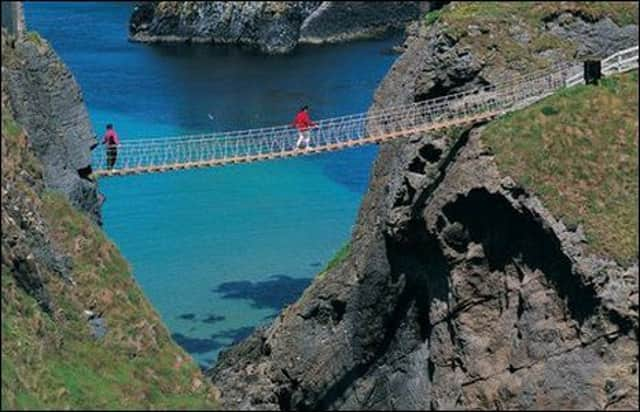Unique mapping project to capture the sounds of Northern Ireland shores


Sounds from places like Strangford Lough, Belfast and the Antrim coast will be uploaded on to the first ever UK coastal sound map, hosted on the British Library website [1]. It could be the vibrant sounds of migrating geese over Strangford, ships entering Belfast Harbour, or the creaking sound of Carrick-a-Rede Rope Bridge in the wind.
All of these sounds will be added to the British Library Sound Archive – creating a snapshot of the beautiful and diverse UK coastline that future generations will be able to hear.
Advertisement
Hide AdAdvertisement
Hide AdThe coastal sound map project co-incides with the 50th anniversary of the National Trust Neptune Coastline Campaign. Launched in May 1965, the Trust now manages 775 miles of coast in England, Wales and Northern Ireland – including more than 100 miles in Northern Ireland.
Musician, producer and founder member of Human League and Heaven 17, Martyn Ware, will be using the sounds submitted by the public, to create a brand new piece of music for release in February 2016.
Cheryl Tipp, Curator of Wildlife and Environment Sounds at the British Library, said: “There is something really evocative about the sounds of our coast; they help shape our memories of the coastline and immediately transport us to a particular time or place whenever we hear them.
“As millions of us head to the coast this summer for holidays or day trips we want the public to get involved by recording the sounds of our amazing coastline and add them to the sound map. This could be someone wrestling with putting up a deck-chair on Portstewart Strand, the sounds of a fish and chip shop in Cushendun or a busy port like Belfast.
Advertisement
Hide AdAdvertisement
Hide Ad“We’d also love to hear from people that might have historic coastal sounds from Northern Ireland, which might, for example, be stored in a box in the loft. This will help us see how the sounds of Northern Ireland coastline have changed over the years [3].”
Sounds recorded, whether on a smart phone, tablet or handheld recorder, can be uploaded to the map via the audioBoom website or app (they are both free and easy to use) [4]. The sounds will then appear on the map, which will be hosted on the British Library website.
All of the sounds should be a maximum of five minutes in length and images and words about the sound can be added. People will then be able to share their sounds on the map with friends and family. The closing date for uploading sounds is Monday 21 September 2015.
At the end of the project all of the sounds that appear on the map will then be added to the British Library’s Sound Archive for future generations to hear [5].
Advertisement
Hide AdAdvertisement
Hide AdThe sounds from the ‘sounds of our shores’ map will be used by Martyn Ware to create a new piece of music.
A 20-minute soundscape will transport listeners to the sensory richness of the coastline; capturing the working coastline and the coast where we go to play.
Martyn Ware, said: “I’ve had a deep connection with the coast all of my life. As a kid growing up in Sheffield we’d go on family holidays to Scarborough or Skegness; I can still remember the sounds that filled our days at the seaside.
“There is something emotionally deep about our connection with the coast which has shaped our identity. That is what is so exciting about this new commission and I want to capture the sensory nature of the coastline, reflecting the diversity and beauty of the sounds of our shores.”
Advertisement
Hide AdAdvertisement
Hide AdWill Hawkins, National Trust Ranger on Strangford Lough said; “Northern Ireland is filled with unique and memorable sounds – the nervous laughs of visitors about to cross Carrick-a-Rede, the sound of ships coming into dock in Belfast, and the gentle ‘sloop’ of oars breaking the tranquil waters of Strangford Lough on a still, sunny day. I find sounds, like smells, can transport you back to the memory of a place, and with this project, you can really stamp your identity on what a place is – what it means to you. I’m really looking forward to seeing what people come up with.”
To get involved in the project visit www.nationaltrust.org.uk/coastal-sounds for top tips on recording sounds on the Northern Ireland coastline and information about how to upload them on to the map. Participants will also be able to share their sounds from Northern Ireland on social media using the hashtag #shoresounds.